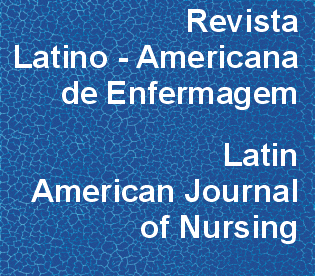Evaluation of Nosocomial Infection Control Programs in health services
DOI:
https://doi.org/10.1590/0104-1169.0113.2530Abstract
OBJECTIVES: to evaluate the Nosocomial Infection Control Programs in hospital institutions regarding structure and process indicators. METHOD: this is a descriptive, exploratory and quantitative study conducted in 2013. The study population comprised 13 Nosocomial Infection Control Programs of health services in a Brazilian city of the state of São Paulo. Public domain instruments available in the Manual of Evaluation Indicators of Nosocomial Infection Control Practices were used. RESULTS: The indicators with the highest average compliance were "Evaluation of the Structure of the Nosocomial Infection Control Programs" (75%) and "Evaluation of the Epidemiological Surveillance System of Nosocomial Infection" (82%) and those with the lowest mean compliance scores were "Evaluation of Operational Guidelines" (58.97%) and "Evaluation of Activities of Control and Prevention of Nosocomial Infection" (60.29%). CONCLUSION: The use of indicators identified that, despite having produced knowledge about prevention and control of nosocomial infections, there is still a large gap between the practice and the recommendations.Downloads
Download data is not yet available.
Downloads
Published
2015-02-01
Issue
Section
Original Articles
License
RLAE’s authorship concept is based on the substantial contribution by each of the individuals listed as authors, mainly in terms of conceiving and planning the research project, collecting or analyzing and interpreting data, writing and critical review. Indication of authors’ names under the article title is limited to six. If more, authors are listed on the online submission form under Acknowledgements. The possibility of including more than six authors will only be examined on multicenter studies, considering the explanations presented by the authors.Including names of authors whose contribution does not fit into the above criteria cannot be justified. Those names can be included in the Acknowledgements section.
Authors are fully responsible for the concepts disseminated in their manuscripts, which do not necessarily reflect the editors’ and editorial board’s opinion.
How to Cite
Menegueti, M. G., Canini, S. R. M. da S., Bellissimo-Rodrigues, F., & Laus, A. M. (2015). Evaluation of Nosocomial Infection Control Programs in health services . Revista Latino-Americana De Enfermagem, 23(1), 98-105. https://doi.org/10.1590/0104-1169.0113.2530



